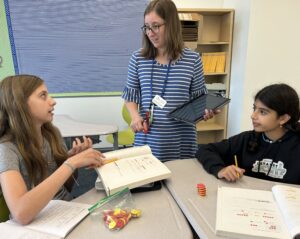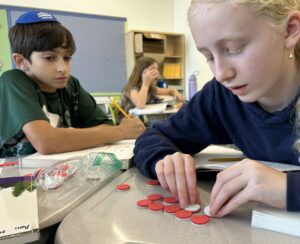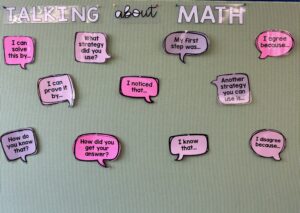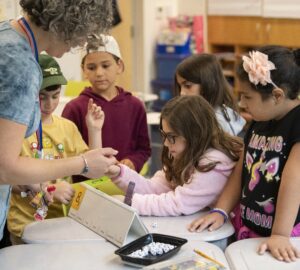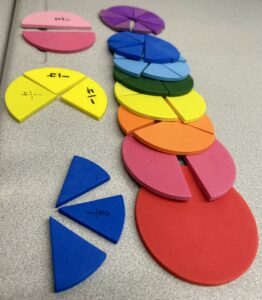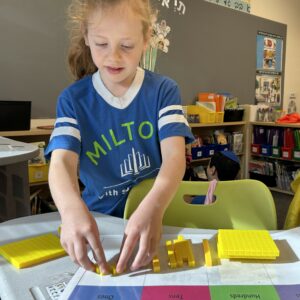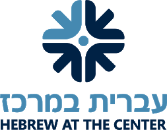Use of manipulatives continues in Middle School. Students use counters to learn integer addition and subtraction, to reinforce that a positive 1 and a negative 1 cancel to make zero.
On a recent day in seventh grade, students worked in pairs to solve a math problem posed by Sherman. -5 – 2= ?
Students flipped the multi-colored disks over to represent negative and positive numbers; white for positive, red for negative, as they grappled with the problem together. Some came up with the right answer while others indicated that the counters did not help clarify the concept. Undaunted, Sherman introduced another visual tool, drawing a number line on the board. Faces brightened in recognition as Sherman showed subtraction along the number line. One student offered “So subtracting a negative is the same as adding a positive number?” “Yes!” exclaimed Sherman, “Exactly! Did you all hear that? Let’s all write it in our notebooks.” The student beamed at having properly summarized the learning as others worked to write it down. The energy in the room was relaxed, positive, and collaborative.
While subtracting a negative number may be the same as adding a positive, it is clear that MILTON math teachers have a positive impact all around.

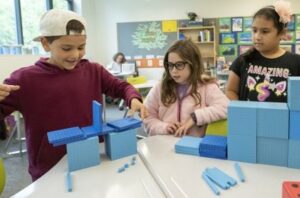 Grade three students use base ten blocks
Grade three students use base ten blocks